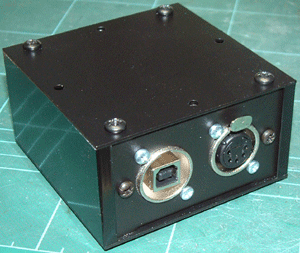The Open Lighting Project has moved!
We've launched our new site at www.openlighting.org. This wiki will remain and be updated with more technical information.
We've launched our new site at www.openlighting.org. This wiki will remain and be updated with more technical information.
Difference between revisions of "USB DMX"
From wiki.openlighting.org
| Line 19: | Line 19: | ||
* The data is buffered in the device, and the device handles the timings itself | * The data is buffered in the device, and the device handles the timings itself | ||
| − | LLA has no driver for this device (8/1 2007) | + | LLA and DMX4Linu has no driver for this device (8/1 2007), but the protocol is documented. |
| − | + | There is a schematic for this device. | |
[[Category:USB]] | [[Category:USB]] | ||
Revision as of 13:50, 8 January 2007
Link: http://www.usbdmx.com/usb_dmx_interface.html
{{ #if: | ![]() }}{{ #if: yes |
}}{{ #if: yes | ![]() }}{{ #if: |
}}{{ #if: | ![]() }}{{ #if: |
}}{{ #if: | ![]() }}{{ #if: yes |
}}{{ #if: yes | ![]() }}{{ #if: yes |
}}{{ #if: yes | ![]() }}{{ #if: |
}}{{ #if: | ![]() }}{{ #if: |
}}{{ #if: | ![]() }}{{ #if: |
}}{{ #if: | ![]() }}
}}
The interface has the following key features.
- USB Bus powered
- DMX lines galvanically opto-isolated from the USB bus
- DMX lines over voltage protected, and current limited
- Simultaneously send and receive up to 512 channels
- Minimal host computer resource needed
- Firmware updatable over USB
- High quality resilient line drivers
- Heavy duty powder coated steel case
- Affordable and easy to build
- Compatible with all major O/S (refers to driver for USB to serial interface)
- The data is buffered in the device, and the device handles the timings itself
LLA and DMX4Linu has no driver for this device (8/1 2007), but the protocol is documented.
There is a schematic for this device.
